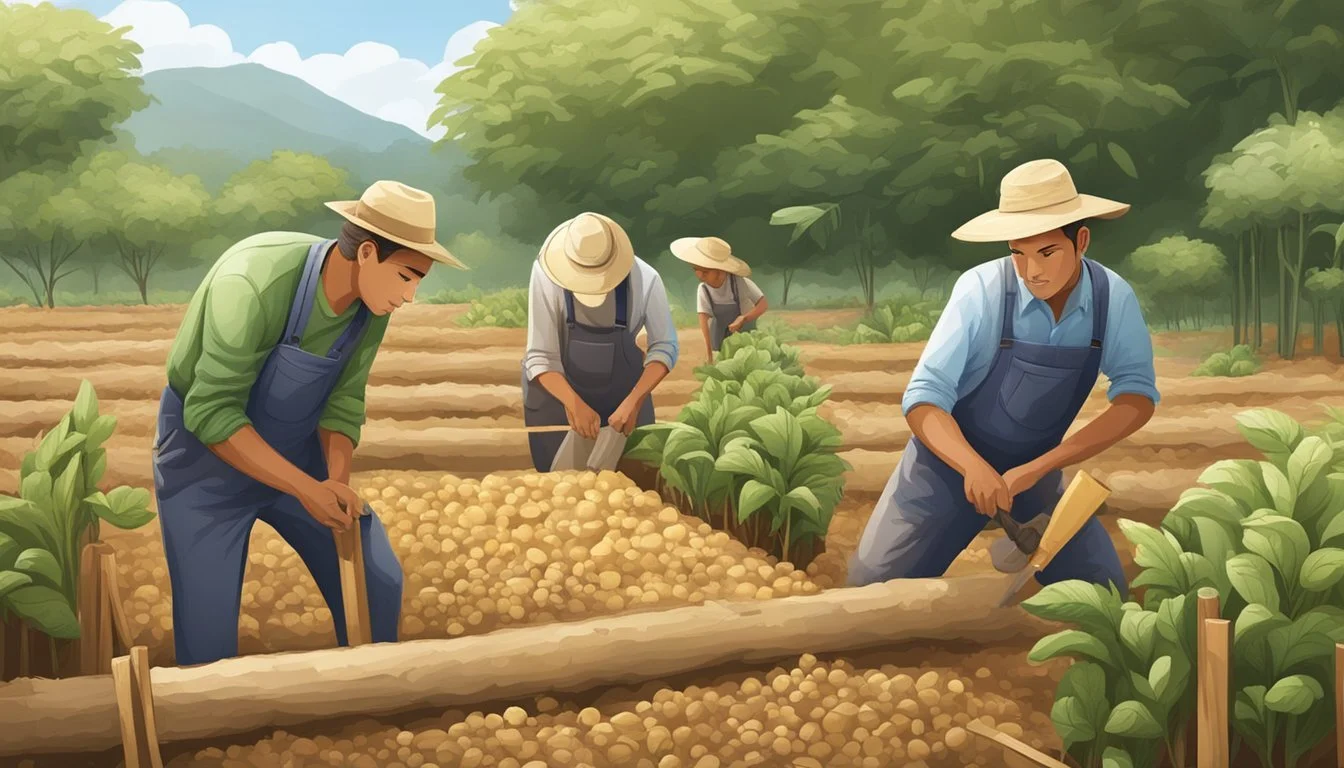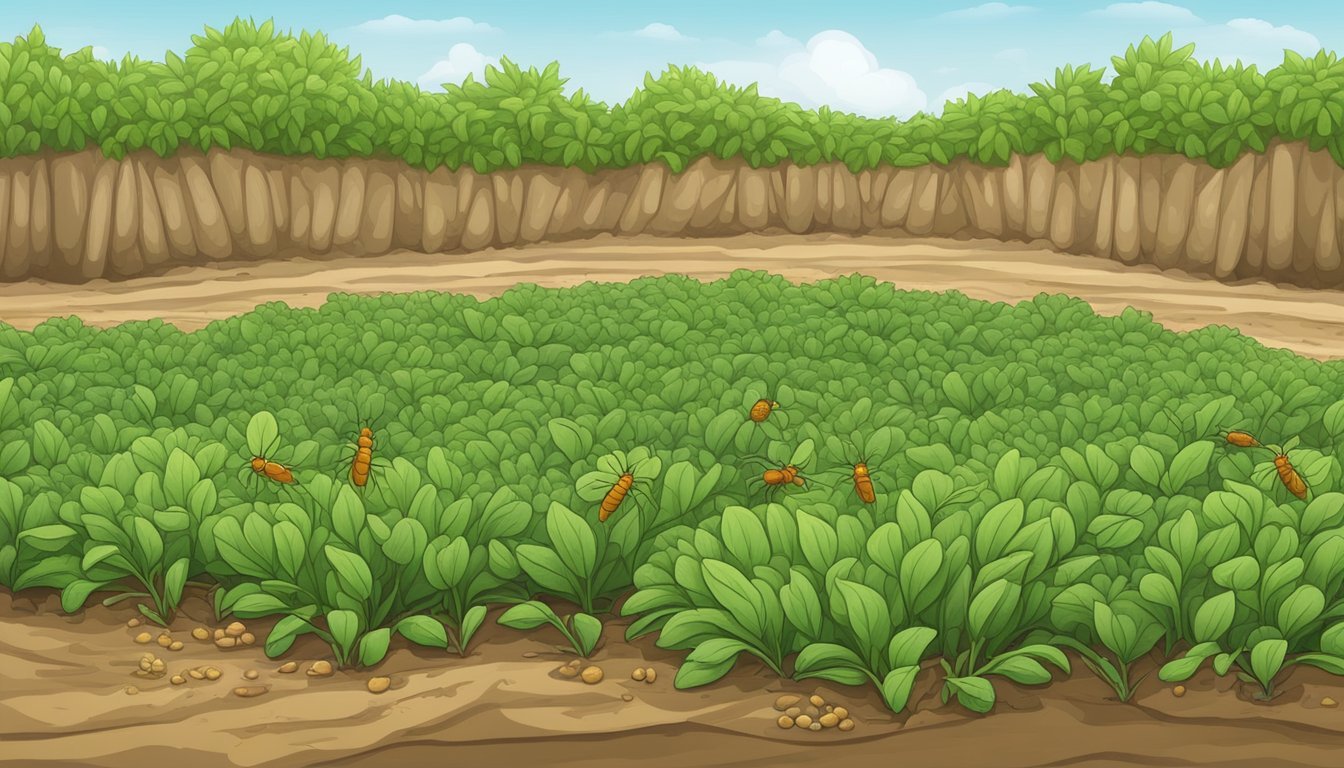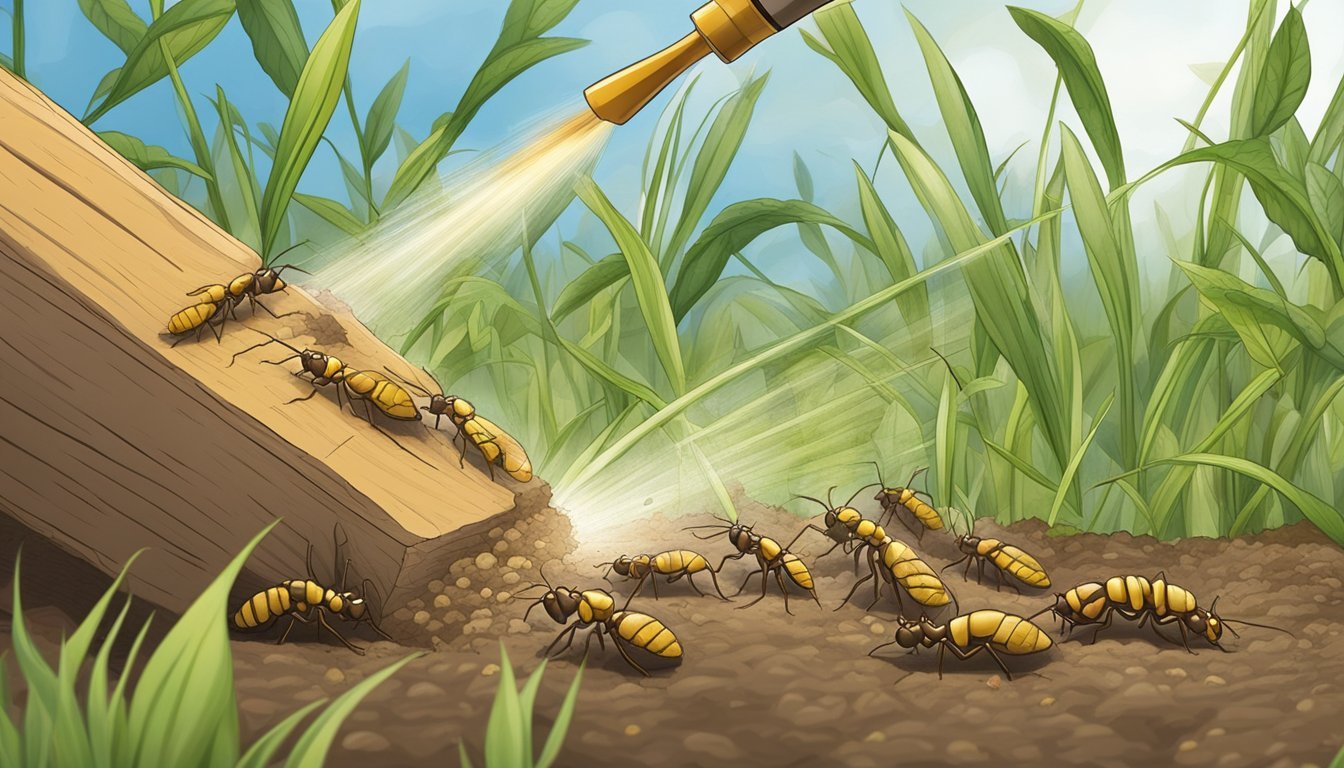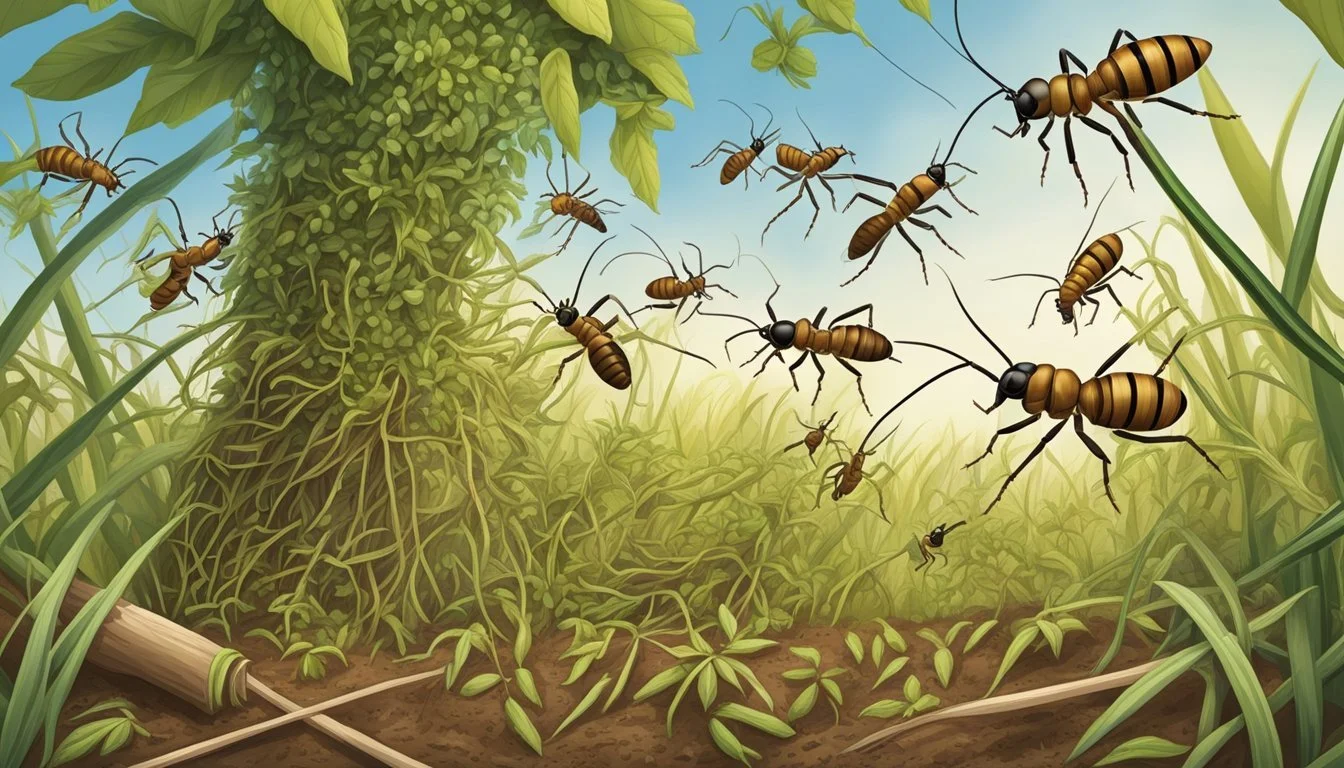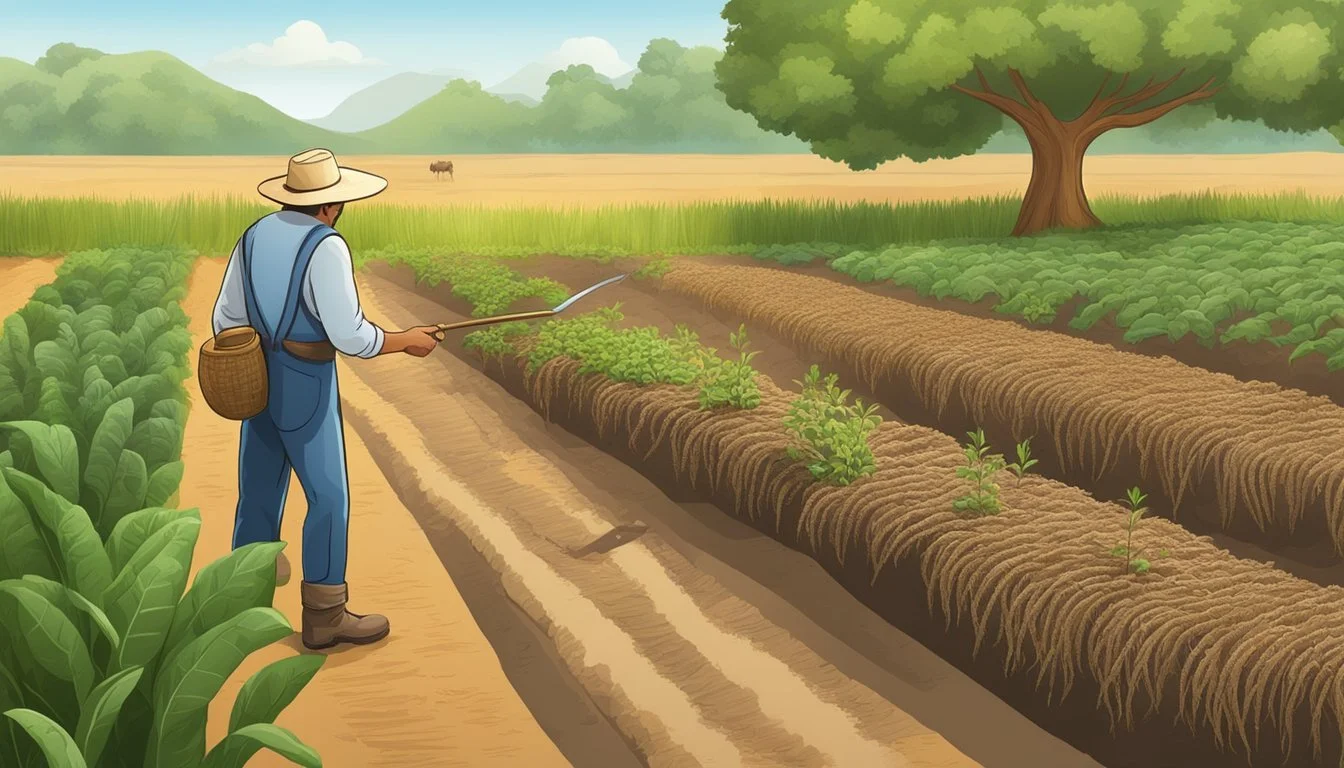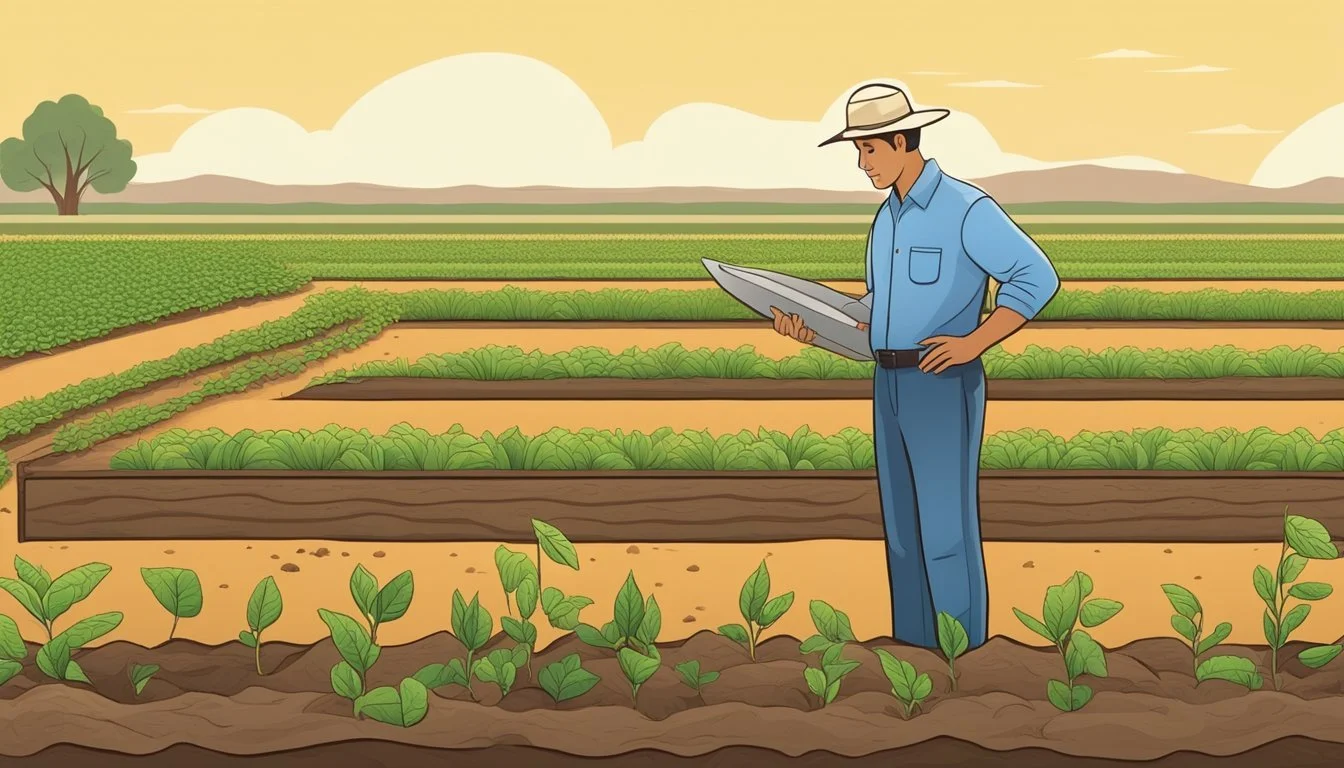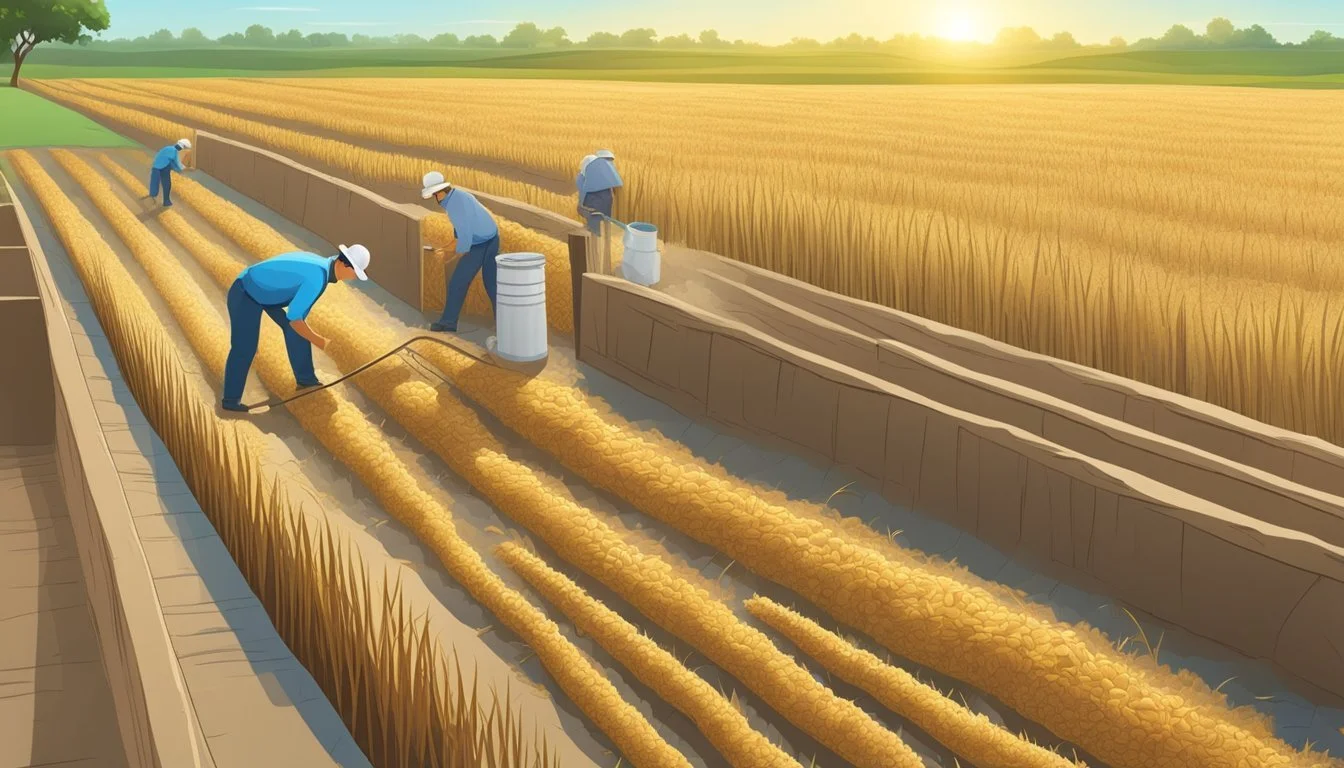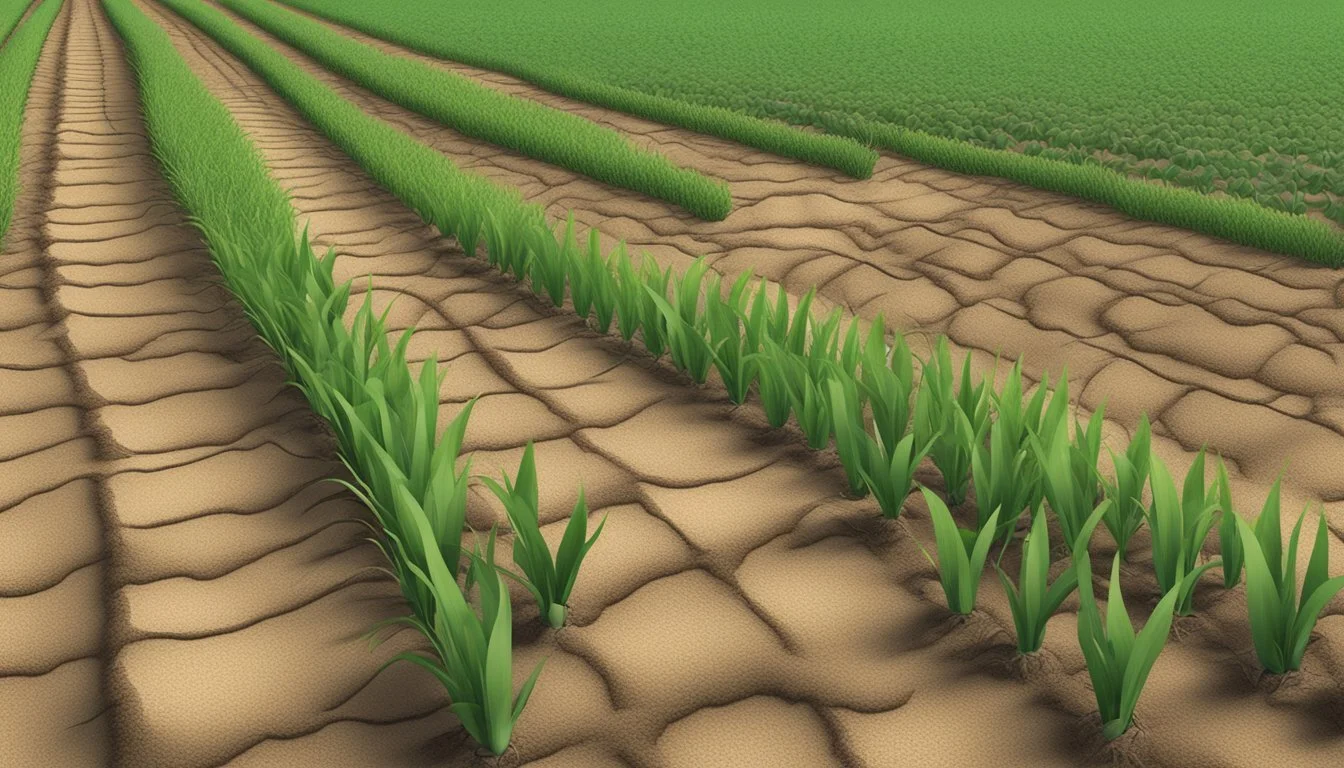Protecting Crops from Termites
Effective Strategies for Pest Management
In agricultural settings, crops are the foundation of a farmer's livelihood and the sustenance for a growing population. However, these valuable plants are under continuous threat from various pests, one of the most destructive being termites. While typically associated with damage to wooden structures, termites also pose a significant risk to agriculture. These pests can cause severe damage to crops by consuming the stems and roots, which can result in substantial yield losses.
Effective termite management is therefore crucial for the protection of crops. Farmers must employ strategies that balance efficacy and environmental consciousness to safeguard their fields. Discovering effective strategies for managing termite populations can lead to better crop production and the overall stability of the agricultural ecosystem. Understanding termite behavior, identifying signs of infestation, and implementing both preventative measures and control techniques are paramount in mitigating the impact of these voracious pests.
In particular, the selection of control methods must consider both the short-term need to eliminate the termites and the long-term health of the soil and the surrounding environment. Methods range from chemical interventions to natural predators and physical barriers, and each has its own benefits and limitations. Advancements in eco-friendly and sustainable practices are increasingly important to protect agriculture from termite attacks while minimizing negative environmental impacts.
Understanding Termites in Agriculture
Termites are a significant concern in agriculture, with certain species causing extensive damage to crops. These social insects have a complex hierarchy that includes workers, a queen, and soldiers. The subterranean termite and the Formosan subterranean termite are particularly notorious for their impact on agricultural practices.
Subterranean termites:
Live in soil
Require moisture
Construct mud tubes for travel
Formosan subterranean termite:
Highly destructive
Large colonies
Aggressive wood consumption
In an agricultural setting, termites can degrade structural components like wood and harvest crops, leading to considerable losses. They primarily feed on dead plant material, which can include important crop residues and living plants.
Management of termites in agriculture is a detailed process that involves:
Identification: Recognizing termite species and understanding their behavior.
Monitoring: Regularly checking for signs of termite activity.
Control methods: Utilizing physical barriers, chemical treatments, and biological control where appropriate.
It is important to acknowledge that termites also play a vital role in the ecosystem, such as soil aeration and nutrient cycling. Therefore, control measures in agriculture must balance the need to protect crops with environmental considerations to maintain sustainability.
Identifying Termite Infestation
Early identification of termite infestations is crucial to protecting crops effectively. Recognizing the signs of their presence and understanding termite behavior can save a great deal of time and resources.
Symptoms of Damage
The first indicator of a termite infestation often comes from observing symptoms of damage to crops. These symptoms may include:
Yellowing and wilting of leaves
Unexpected stunted growth of plants
Damaged stems with holes or gnawings
The presence of mud tunnels on or near crops
Wooden structures in proximity to crops showing signs of damage, such as honeycomb patterns in the wood
Termite activity around agricultural areas can also be detected by the appearance of soil mounds, which are constructed by termites as part of their colonies.
Termite Species and Behaviors
Understanding termite species and behaviors is essential for identification and management:
Odontotermes obesus, commonly found in tropical regions, can affect a wide range of crops, including mango and citrus trees.
Species: Odontotermes obesus
Known Crops Affected: Mango, Citrus
Behavior Patterns: Builds extensive subterranean tunnels and nests
The behavior of termites varies significantly among different species. Some species are more likely to build mounds, while others prefer to create elaborate tunnels underground. In the case of an infestation, distinct patterns of behavior related to the specific termite species involved will guide the appropriate response measures.
Cultural Methods of Termite Management
Cultural methods of termite management are sustainable strategies that reduce termite populations and protect crops by altering farming practices. These methods focus on preventive measures rather than reactive chemical applications, aligning with both economic and environmental sustainability.
Crop Rotation
Crop rotation is an effective strategy to disrupt the life cycle of termites. Regularly changing the types of crops planted in a field prevents termites from becoming established. For example, rotating cereals such as barley or maize with non-host crops like pulses or groundnut reduces termite problems as these crops are less favored by termites.
Soil Management
Integrating organic material into the soil enhances its fertility and structure, which can indirectly control termite populations. Mulching with organic matter, like crop residues, can create a physical barrier against termites. The timing of sowing and harvesting can also influence termite activity; early sowing and harvesting help avoid peak termite periods when they are most destructive.
Irrigation Techniques
Irrigation techniques can reduce termite activity by creating unfavorable conditions for their survival. Proper water management ensures that crops receive adequate moisture without creating excess humidity around the roots, which attracts termites. Scheduling irrigation to maintain optimally moist soil helps safeguard against these pests, especially in crops like cotton, millets, and maize that are susceptible to termite damage.
Physical and Mechanical Control Strategies
Physical and mechanical control strategies are essential in mitigating cases of termite damage in crops. They provide dependable solutions with an emphasis on preventing termites from reaching plant roots and other underground structures.
Physical Barriers
Physical barriers act as a first line of defense, deterring termites from accessing vital areas. Utilizing sand as a barrier takes advantage of its particle size, which impedes the termites' ability to move through it. Another effective method involves laying sheeting materials, like metal or plastic, which create an impenetrable shield around the crop’s root zone. For instance, farmers may line the base of their plants with these materials to block subterranean pests.
Soil Treatment
Soil treatment with physical control methods aims at modifying the environment to be less hospitable to termites. One practice is meticulous soil cultivation, which disrupts termite foraging patterns and can lead to the destruction of their galleries and nests. Additionally, tilling the soil helps in breaking apart termite tunnels and can expose termite workers and soldiers to predators and environmental conditions that are unfavorable to them. Soil compaction is sometimes employed to make the soil density unfavorable for termite infiltration. The treatment with specific soil types, such as clay-rich soils, can also deter termites due to the difficult excavation conditions they present for these pests.
Chemical Termite Control Measures
Chemical strategies are essential in the management of termite populations. They provide direct defense against infestation and are widely implemented due to their efficacy.
Termiticides
Termiticides are specialized pesticides aimed at preventing and eliminating termites. They are typically applied to the soil surrounding a structure to create a chemical barrier that termites cannot cross. Hexaflumuron is an example of a slow-acting termiticide which disrupts termite growth and molting processes, leading to the gradual decline of the colony.
Insecticides
Insecticides, particularly those containing thiamethoxam, are effective in controlling termite populations through their neurotoxic properties. These chemical agents interfere with the nervous system of termites upon contact or ingestion, providing a powerful method of extermination. Insecticides are often used in tandem with other control techniques for enhanced results.
Bait Systems
Bait systems involve the strategic placement of bait containing a slow-acting insecticide, like hexaflumuron, to attract termites. They consume the treated material and share it within the colony, eventually resulting in the colony's elimination. Bait systems are a targeted approach and reduce the amount of chemical dispersed in the environment.
Biological Control of Termites
The use of biological control methods for termites focuses on employing natural mechanisms such as microbial agents, botanical treatments, and natural predators to manage and mitigate pest damage to crops.
Microbial Agents
Microbial agents play a significant role in controlling termite populations. Researchers have identified certain fungi, such as Metarhizium anisopliae and Beauveria bassiana, as effective against various termite species. These fungi act as pathogens, infecting and eventually killing their termite hosts. For example, fungus-growing termites can be targeted with these specific fungal agents, interrupting their ability to maintain their colonies.
Botanical Treatments
Botanical treatments involve the application of plant extracts that serve as termite baits or repellents due to their natural toxicity or deterrent properties. Various plants produce compounds that are toxic to termites when ingested or contacted. Notably, certain plant essential oils and seed extracts demonstrate efficacy against termites by causing mortality or repelling them, minimizing the risk of infestation.
Natural Predators
The inclusion of natural predators in the biological control strategy enhances termite management. These predators consist of a range of organisms including birds, lizards, and entomopathogenic nematodes. Entomopathogenic nematodes, in particular, are microscopic roundworms that seek out termite larvae and infect them with bacteria, leading to the pest's death. The presence of these natural predators in an ecosystem contributes to keeping the termite populations in check.
Sustainable and Organic Termite Management
Sustainable and organic termite management focuses on environmentally-friendly approaches that protect crops while preserving soil health and ecosystem balance. These methods prioritize the use of natural materials and resistive crops to mitigate the impact of termites in agriculture and gardening.
Organic Material Use
Organic materials, such as manure and compost, play a vital role in creating a hostile environment for termites. By applying organic fertilizers, farmers and gardeners can improve soil structure and nutrient content, which indirectly affects termite activity. The decomposing organic matter generates increased microbial activity, potentially warding off termites who prefer less active environments.
Manure: Applying well-aged manure can enhance soil fertility while contributing to termite control.
Compost: Enriching soil with compost not only boosts crop health but might also deter termites due to the altered soil conditions.
Termite Resistant Crop Varieties
Selecting termite-resistant crop varieties is a crucial step in organic termite management. By choosing plants that are less appealing or resilient to termite damage, farmers reduce the need for synthetic pesticides, leading to a more sustainable and health-conscious agricultural practice. Research on plant breeding and genetics often identifies varieties with inherent termite resistance, which can be a practical choice for regions prone to termite problems.
Resistant Varieties: It includes crops that have shown less susceptibility to termite attacks.
Breeding programs: These programs aim to enhance crops' resistance to termites, leading to fewer losses and decreased reliance on chemical control methods.
Agricultural Practices and Termite Prevention
Effective termite prevention in agriculture hinges on adopting certain cultivation practices and managing crop residues properly. These strategies aim to reduce the appeal of the environment to termites, thus protecting crops and plantations.
Protective Cultivation
In the realm of agriculture, protective cultivation is a pivotal strategy for termite management. This involves choosing appropriate crop species and cultivating methods such as crop rotation with non-preferred crops for termites, which can significantly diminish termite populations. Additionally, planting trees and other crops that enrich the soil with nitrogen can promote vigorous plant growth, thereby strengthening plant roots and resilience against termite damage. Intercropping, especially with plants like soybean or groundnut, can also deter termites by disrupting their foraging patterns. Adequate ventilation and moisture control in the soil create less favorable conditions for termites.
Timely Harvesting
Crops are most vulnerable when they are mature, as termite infestation tends to escalate. Timely harvesting is therefore crucial, as it minimizes the exposure of crops to termite attacks during their most susceptible phase. By removing the crops at the right time, farmers reduce the food sources for termites.
Residue Management
Post-harvest, residue management plays a significant role in termite prevention. Farmers should diligently remove plant debris and leftover harvest residue to deprive termites of their food and nesting sources. Clearing the crop field and its surroundings, including border cleaning and cultivation, can destroy potential termite habitats and reduce their foraging activities. Practices such as deep ploughing can expose termite workings to the sun, decreasing their chance of survival.
Economic Impact of Termite Damage on Crops
Termites are significant pests in agriculture, leading to substantial economic losses globally. They impact a variety of crops, causing extensive damage that requires costly management and repair.
Key Affected Crops:
Wheat: Easily damaged by termite activity, leading to reduced yields.
Maize: Vulnerability to root and stalk damage affects overall crop health.
Tea: Plantation infrastructure and the plants themselves can be compromised.
Palm: Including oil palm, can suffer from structural damage to the trunk.
Yam: Tuber damage directly leads to quantifiable economic loss.
Financially, termite activity accounts for significant losses in the agricultural and forestry sectors. The economic impact spans from direct harm to plants, through to destruction of wooden structures such as farming equipment and storage facilities. It extends to the forestry industry, where termites degrade the quality of timber.
The estimated loss due to pests for different crops is as follows:
Wheat: High
Maize: Very High
Tea: Moderate
Palm: High
Yam: High
Management Expenses: Costs include not only the value of lost crops but also the expense of implementing termite management strategies.
The brazen resilience of termites calls for continuous research and innovation in their management. Scientists are assessing the economic and ecological importance of termites, seeking balanced solutions to protect crops and maintain these insects' positive roles in ecosystems.
Integrating Termite Management in Plantation Crops
When managing termites in plantation crops such as tea, palm, coconut, and various fruits, the approach must be systematic and eco-friendly. Farmers and agricultural managers should adopt an integrated pest management (IPM) strategy to minimize damage and ensure sustainable crop production.
Cultural Practices:
Crop Rotation: Rotating non-preferred crops with cash crops deters termites over time.
Intercropping: Planting a mix of crops can reduce the appeal to termites.
Sanitation: Regularly remove plant debris to eliminate termite hiding places.
Physical Barriers:
Soil Treatment: Apply safe soil amendments that discourage termite foraging.
Trenching: Dig trenches around crops to serve as physical barriers for termites.
Biological Controls:
Encourage natural predators like nematodes, ants, and beetles to thrive as they prey on termites.
Deploy fungi and bacteria known for their biocontrol properties against termites.
Chemical Treatments:
Use targeted termite baits with minimal environmental impact.
Apply soil insecticides sparingly and only as a last resort.
For specific crops such as:
Tea: Ensure proper field sanitation and apply mulches that are less attractive to termites.
Palm & Coconut: Implement proper irrigation practices and use beneficial microorganisms to strengthen plant defense.
Fruit Plantations: Select resistant varieties and monitor regularly for early detection of termite infestation.
By incorporating these practices into their plantation management, farmers can significantly reduce the risk of termite damage, ensuring the health and productivity of their crops. It is crucial to tailor these strategies to local conditions and termite species for effective management.
Termite Management in Cereal and Pulse Cultivation
Effective termite management in cereal and pulse crops like wheat, maize, barley, and millet is critical for protecting these important food sources. Farmers have noted termite infestation rates of up to 20-25% in rainfed crops and up to 10% in irrigated crops, necessitating proactive control measures.
Cultural Controls:
Regular field monitoring: Early detection can reduce termite damage.
Crop rotation: A technique that disrupts termite life cycles.
Field sanitation: Removal of plant debris to decrease termite habitats.
Physical Controls:
Soil Treatment: Application of biocontrol agents like entomopathogenic fungi can reduce termite populations without harm to the crops.
Chemical Controls:
Use of approved insecticides: Must be used judiciously to minimize environmental impact.
Biological Controls:
Beneficial nematodes: These organisms naturally prey on termite larvae.
Integrated Pest Management (IPM):
Combines multiple strategies listed above for a comprehensive approach to termite control.
It is important for farmers to understand the behaviors and preferences of termites, such as their attraction to crops with high water content. Practices like pre-planting tillage and keeping field borders clean are effective in destroying termite mounds and reducing foraging. Termites pose a significant threat to agriculture, but with a meticulous and informed approach, their impact on cereal and pulse production can be substantially mitigated.
Post-Harvest Strategies to Reduce Termite Damage
Proper post-harvest management is crucial in safeguarding crops from termite infestation. These wood-eating insects target cellulose and lignocellulose found in leftover plant debris, making post-harvest fields attractive.
Storage Practices
Sanitation: It starts in the fields with the removal and destruction of crop stubble and plant residue which termites use as food and shelter.
Wood Treatment: Wooden storage facilities should be treated with anti-termite products to prevent infestation.
Field Management
Soil Adjustments: The physical alteration of soil properties through deep plowing can disrupt termite colonies.
Crop Rotation: Implementing crop rotation, especially with non-cellulose-producing plants, can help break the cycle of termite reproduction and reduce damage.
Technological Interventions
Utilize termite-resistant containers or apply protective coatings to existing storage options.
Explore biological control agents that target termite colonies post-harvest.
Farmers and agricultural professionals must remain vigilant during the harvesting and storage phases to ensure their hard work does not succumb to termite damage. Through these deliberate actions, the protection of crops post-harvest can be significantly enhanced.
Frequently Asked Questions
This section addresses common inquiries on how to safeguard agricultural endeavors from the damaging impact of termites using natural and chemical-free approaches.
What natural treatments are effective against termites in agricultural settings?
Natural treatments, such as neem oil, can deter termites due to its active compound, azadirachtin, which impacts termite growth and survival.
Which plants can be used as repellents to protect crops from termite infestations?
Certain plants, like vetiver grass, are known to protect crops from termites due to their strong-smelling roots, which are believed to repel these pests.
How can termites in soil be treated without the use of chemicals?
Biological control agents, such as entomopathogenic nematodes, can be introduced to the soil as predators to treat termites without resorting to chemicals.
Are there any implications for using ground cover as a deterrent for termites in gardens?
Using ground cover like thick mulch can sometimes attract termites if it retains moisture, so it is crucial to select the right type of cover and monitor moisture levels to avoid creating a termite-friendly habitat.
What measures can be taken to prevent termite invasion in a vegetable garden?
Preventive measures include removing excess wood and debris, maintaining good drainage to avoid water accumulation, and creating a barrier with sand or diatomaceous earth around the garden perimeter.
Do certain plants have the ability to naturally repel termites and protect crops?
Yes, some plants, such as marigolds, have been recognized for their potential to naturally repel termites, providing protection to nearby crops through their emitted odors.

